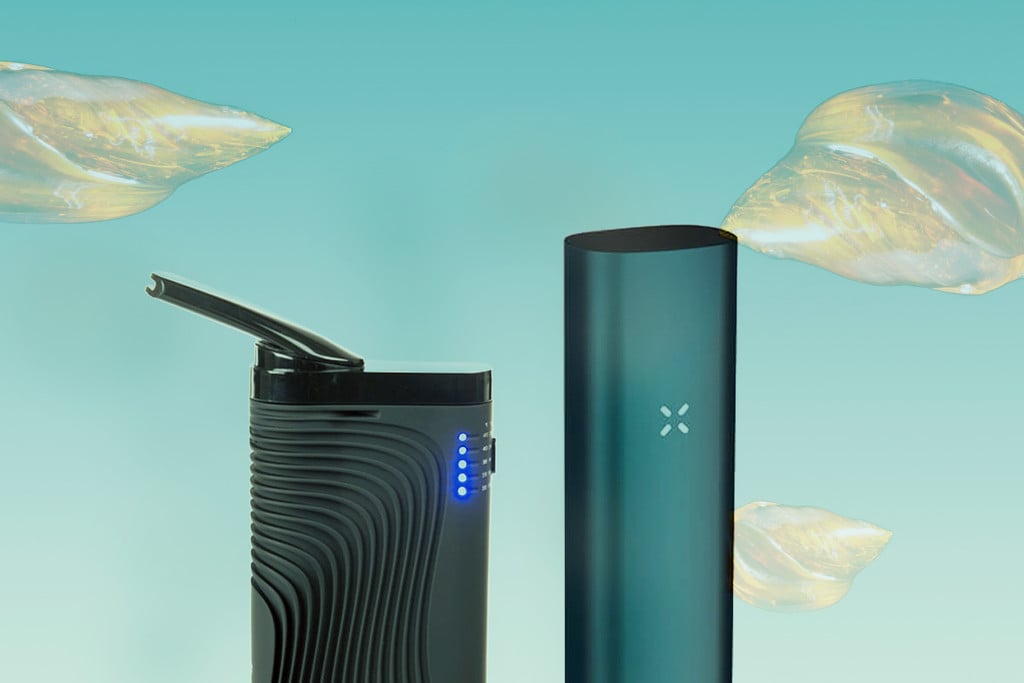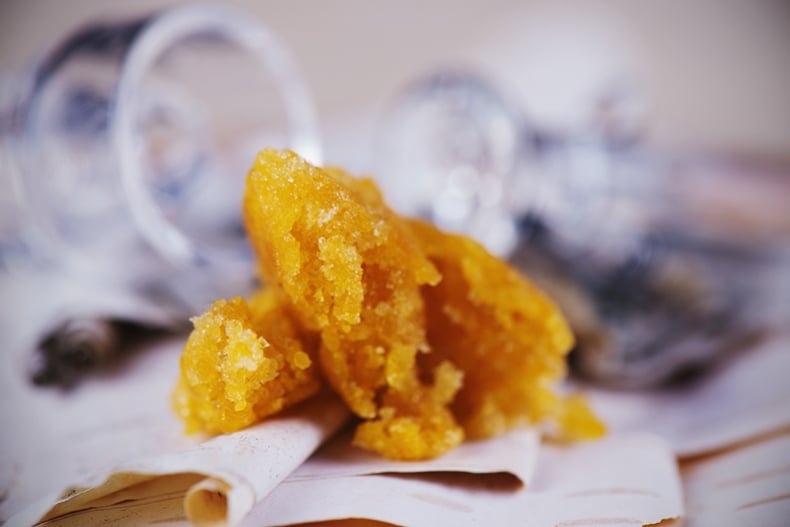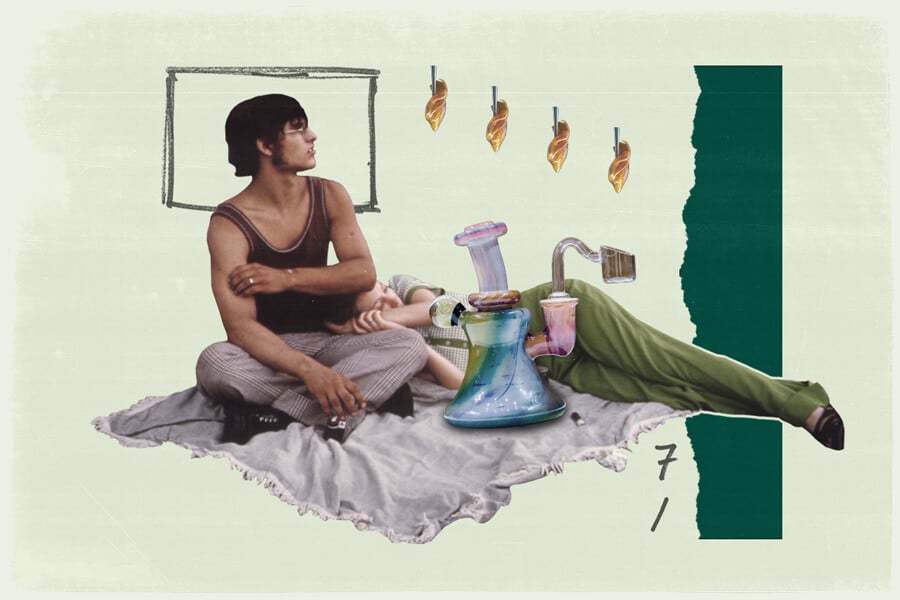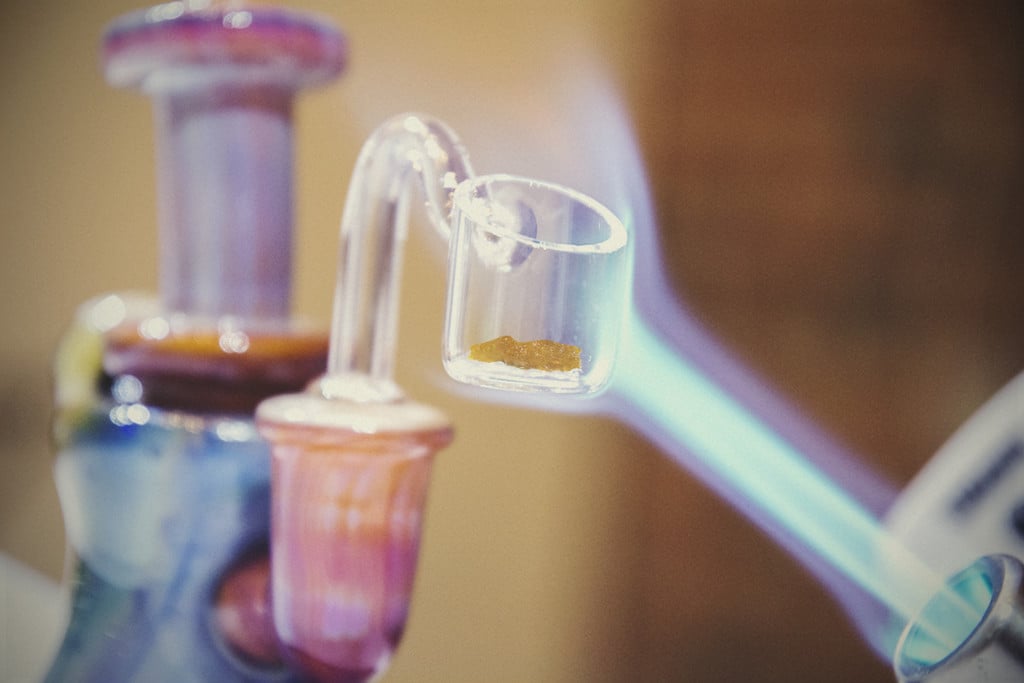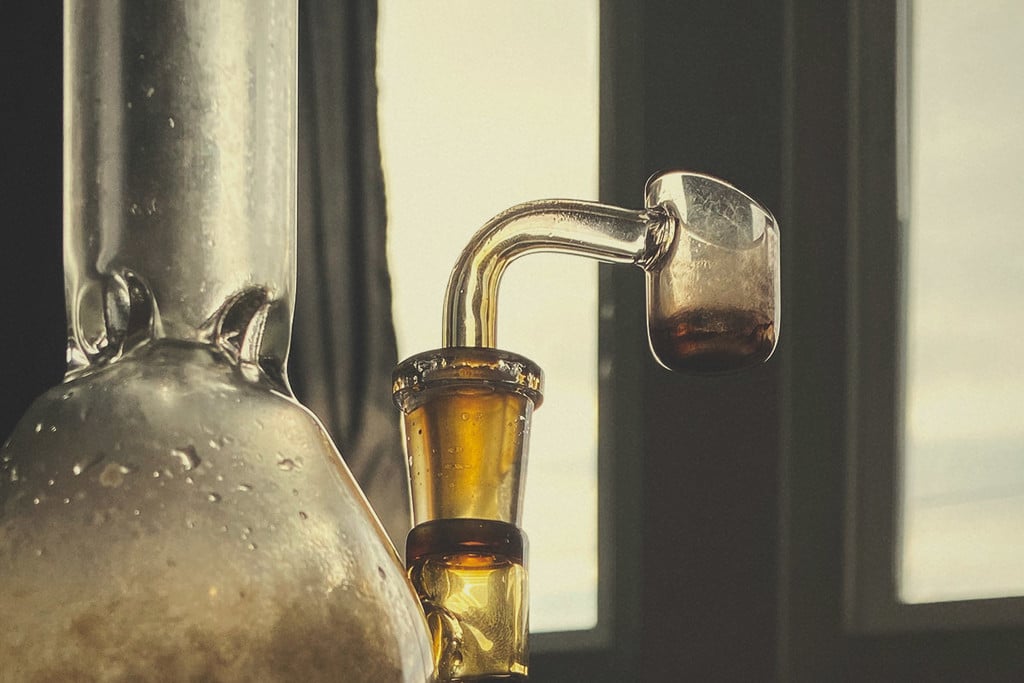.
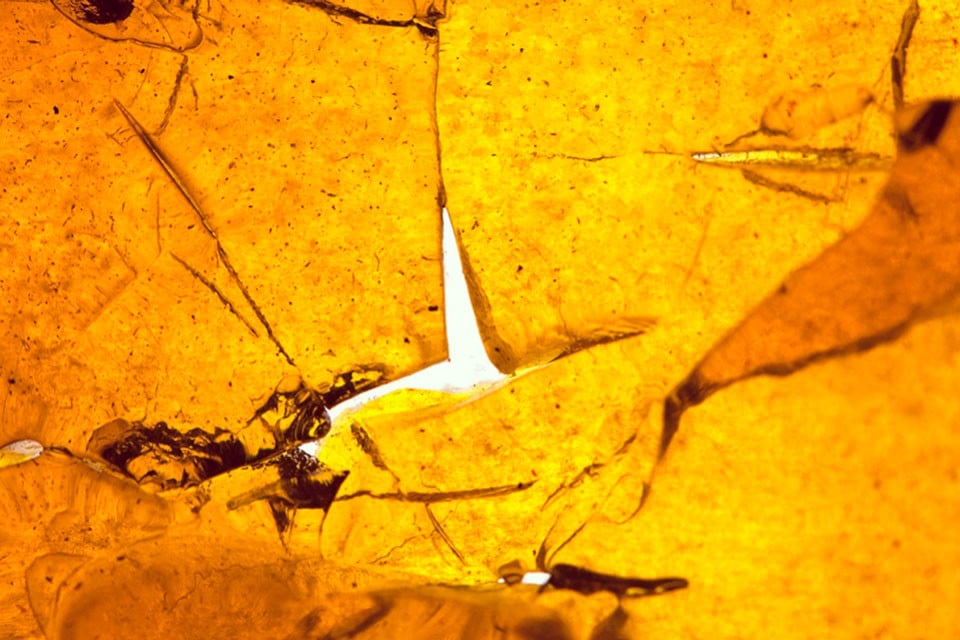
Marijuana 101: A Guide To Dabbing
Cannabis concentrates, or dabs, are the hottest thing in the world of cannabis right now. In this article, we explore dabs, what they are, how dabbing works, and much more about the fascinating world of concentrates.
Contents:
This relatively new phenomenon has opened cannabis aficionados up to a whole new world of flavours and aromas—as well as flavours that are completely different to what you're likely used to from smoking cannabis.
To learn more about dabs, what they are, and how to dab properly, here's our in-depth guide to cannabis dabbing.
What does dabbing mean?
"Dabbing" is a term used that refers to the act of smoking or vaporizing cannabis concentrates (or "dabs") using a dab rig. Dabbing has become increasingly popular in legal cannabis markets, particularly in the US, where dabs are sold at dispensaries throughout most legal states.
Dabs come in countless different forms and are sold under various names. Some of the most popular types of dabs today include:
- BHO, or Butane Hash Oil, which comes in a variety of forms, including Wax, Shatter, Budder, Live Resin, and more
- Rosin
- Hash
- PHO, or Propane Hash Oil, which is similar to BHO but uses propane as a solvent instead of butane
- Bubble hash
- Terp sauce
Dabs can be consumed in a number of different ways, but as mentioned, the most popular way is by smoking them through a special water pipe known as a dab rig. Alternatively, they can also be mixed into joints, bongs, and blunts, or vaporized using a portable or desktop concentrate vape.
-
Can dabbing hurt your lungs?
Many dab fanatics will tout dabbing as a healthy alternative to smoking. That's because, at least in theory, dabbers believe their concentrates "vaporize" rather than combust, resulting in a cleaner inhale that contains far fewer toxins than regular cannabis smoke. Dab rigs, like bongs, also use water chambers to cleanse and cool vapor before it is inhaled, which is believed to help filter out toxins and reduce damage to the lungs.
However, there is significant clinical research to suggest that dabbing can cause lung injury. In 2019, for example, the journal Respiratory Medicine Case Reports published a study that explored the case[1] of a young female dab user who reported to ER with respiratory symptoms.
Besides describing the case of the individual in question and diagnosing her with severe acute lung injury, the study also reviewed data from other cases of dab users to examine the potential of dabs to cause lung injury and respiratory problems. The authors of the study concluded that regular dabbing has a high potential to cause lung injury due to:
- Possible pollutants present in the dabs themselves. Toxicology reports[2] studying butane hash oil have shown that BHO can contain up to 34% butane pollutants.
- Overheating the dabs. Dabbing involves using a blowtorch to heat the nail of the dab rig (similar to the bowl of a regular bong) to extremely high temperatures. Any concentrates that come into contact with the nail evaporate immediately. This method makes it virtually impossible to properly control the temperatures of the rig, and most users probably end up overheating their dabs, causing the cannabinoids, terpenes, and other compounds in the extract to form into dangerous toxins. Studies have shown that terpenes and other BHO constituents can degrade into harsh pulmonary irritants such as Methacrolein and Benzene when heated above 480 degrees celsius.
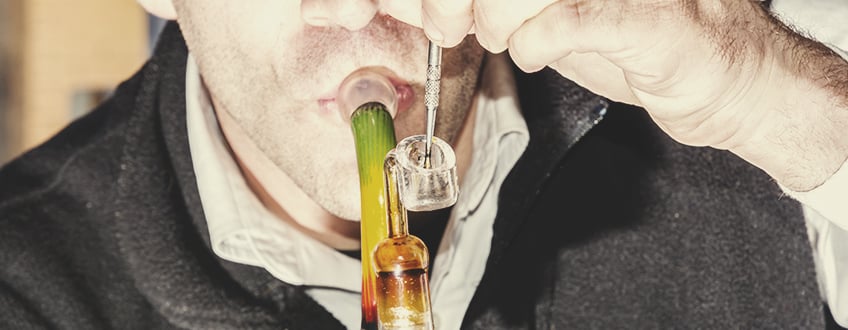
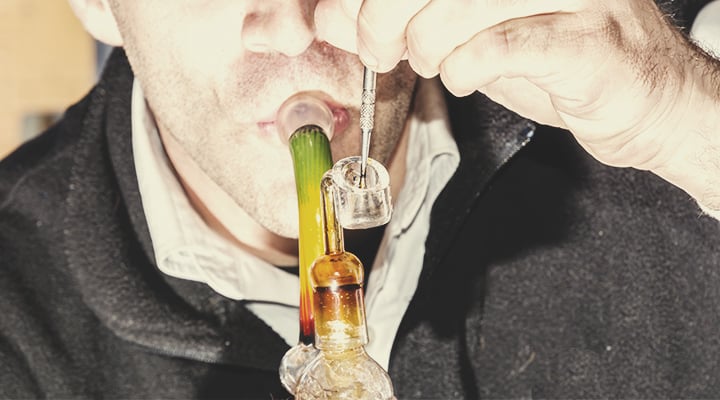
What are the pros and cons of dabbing?
Dabbing has revolutionized the way people consume cannabis. And while both dabs and dabbing bring a lot of new and exciting possibilities to the table, they also have specific drawbacks. Learn more about the pros and cons of dabbing below:
-
Pros of dabbing
| More potency | One of the main reasons people love dabs is their increased potency. Cannabis concentrates like BHO and other dabs can contain much higher concentrations of cannabinoids and terpenes. As a result, dabs tend to produce much stronger and longer-lasting effects than what you'd get from regular flower. |
| More terpenes | Terpenes are very fragile compounds that are extremely sensitive to heat. Some extraction methods allow concentrate manufacturers to create dabs with really rich concentrations of terpenes that make for a much more flavourful final product. |
| Different high | Most cannabis users find that dabs produce a very unique high. While every person experiences cannabis differently, people who have gotten high off dabs have described the effects as more clear-headed, uplifting or sedating (depending on the strain) than the high they're used to from smoking flower. |
| Proper dosage | As we learn more about cannabis and its myriad of different uses, proper dosage is becoming ever more important. Whether people use cannabis recreationally or for medicinal purposes, having control over their dose allows cannabis users to better tailor their experience and use of cannabis to their unique needs. In regulated markets where concentrates are clearly tested and labeled with the number of cannabinoids or terpenes they contain, dabbing provides users with an alternative to flower which is much easier to dose. |
| More variety | Cannabis concentrates have opened up a world of new flavours and textures that provide cannabis with unique ways to experience far beyond what they are used to from flower. |
| More potency |
| One of the main reasons people love dabs is their increased potency. Cannabis concentrates like BHO and other dabs can contain much higher concentrations of cannabinoids and terpenes. As a result, dabs tend to produce much stronger and longer-lasting effects than what you'd get from regular flower. |
| More terpenes |
| Terpenes are very fragile compounds that are extremely sensitive to heat. Some extraction methods allow concentrate manufacturers to create dabs with really rich concentrations of terpenes that make for a much more flavourful final product. |
| Different high |
| Most cannabis users find that dabs produce a very unique high. While every person experiences cannabis differently, people who have gotten high off dabs have described the effects as more clear-headed, uplifting or sedating (depending on the strain) than the high they're used to from smoking flower. |
| Proper dosage |
| As we learn more about cannabis and its myriad of different uses, proper dosage is becoming ever more important. Whether people use cannabis recreationally or for medicinal purposes, having control over their dose allows cannabis users to better tailor their experience and use of cannabis to their unique needs. In regulated markets where concentrates are clearly tested and labeled with the number of cannabinoids or terpenes they contain, dabbing provides users with an alternative to flower which is much easier to dose. |
| More variety |
| Cannabis concentrates have opened up a world of new flavours and textures that provide cannabis with unique ways to experience far beyond what they are used to from flower. |
-
Cons of dabbing
| Availability | Unfortunately, BHO and other dabs are something most cannabis users only dream of tasting/trying, as they can be very hard to access outside of the legal markets in the US. Outside of those markets, cannabis users looking to try dabs have to procure them on the black market, where there are no standards for quality or safety. |
| Dangerous to make at home | While some dabs can be made at home (such as hash, bubble hash, and rosin), others can't. BHO, for example, should never be made outside of a professional laboratory, as the process is extremely dangerous and can cause explosions, fires, and death. |
| High potency | While the higher potency of dabs is a pro for some, it can also be a con for others, particularly users who haven't tried concentrates before or have a low tolerance for THC. For these users, the high cannabinoid concentration of dabs can cause negative experiences and side effects such as nausea, dizziness, and "greening out." |
| Can seem overwhelming for rookies | Dabbing is a fairly intense process that typically involves using a big glass rig, blowtorch, a red-hot nail, and sticky, hard-to-handle concentrates. For rookies, dabbing can seem overwhelming and even dangerous. Hence, if you're new to dabbing, we always recommend that you try it with someone more experienced who can help guide you through the process. |
| Availability |
| Unfortunately, BHO and other dabs are something most cannabis users only dream of tasting/trying, as they can be very hard to access outside of the legal markets in the US. Outside of those markets, cannabis users looking to try dabs have to procure them on the black market, where there are no standards for quality or safety. |
| Dangerous to make at home |
| While some dabs can be made at home (such as hash, bubble hash, and rosin), others can't. BHO, for example, should never be made outside of a professional laboratory, as the process is extremely dangerous and can cause explosions, fires, and death. |
| High potency |
| While the higher potency of dabs is a pro for some, it can also be a con for others, particularly users who haven't tried concentrates before or have a low tolerance for THC. For these users, the high cannabinoid concentration of dabs can cause negative experiences and side effects such as nausea, dizziness, and "greening out." |
| Can seem overwhelming for rookies |
| Dabbing is a fairly intense process that typically involves using a big glass rig, blowtorch, a red-hot nail, and sticky, hard-to-handle concentrates. For rookies, dabbing can seem overwhelming and even dangerous. Hence, if you're new to dabbing, we always recommend that you try it with someone more experienced who can help guide you through the process. |
What do you need to dab?
Dabbing involves some specialised equipment and ingredients, including;
-
Cannabis concentrates
Cannabis concentrates are, you guessed it, highly concentrated forms of cannabis. While there are countless different dabs on the markets, they are all essentially have the same origin. Dabs are made by separating the trichomes (the sticky crystals that cover cannabis buds) from the plant matter and condensing them down to create an extract with high amounts of terpenes and cannabinoids. The type of concentrate is determined by the production method used.
Some of the most popular types of dabs include:
- Wax, a type of BHO with a thick, sticky, waxy texture similar to crystallized honey.
- Shatter, a type of BHO with a clear, brittle, glassy texture that shatters easily.
- Budder, a type of BHO that is agitated during extraction to create a thick, creamy extract with a butter-like consistency.
- Terp sauce, a runny terpene-rich extract (typically made using butane) riddled with thick terpene crystals that provide tons of aromatics.
- Live resin, a unique extract made with live cannabis buds that are flash-frozen after harvest to preserve different terpenes and cannabinoids than dried and cured buds.
- Rosin, a solventless extract made by pressing dried flowers with a hydraulic press. Due to the lack of butane, this is probably the most prefered for those looking to keep it as clean as possible.
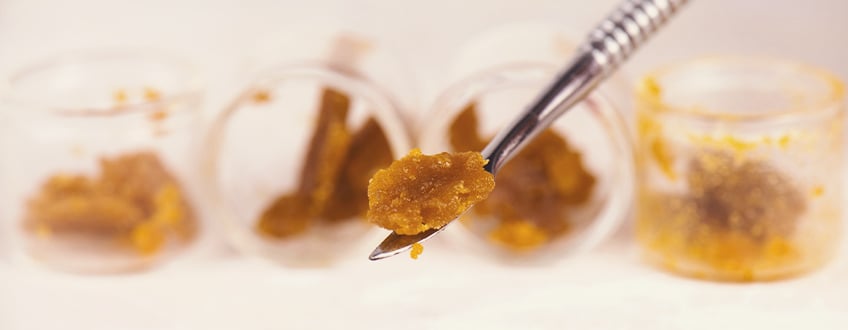
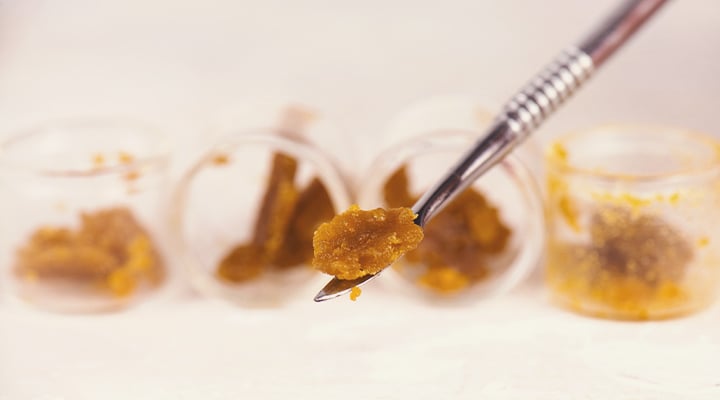
-
Dab rig
Dab rigs closely resemble regular water pipes or bongs and can come in countless shapes, sizes, and styles. In contrast to bongs, dab rigs have a few different components that make them unique, including:
- A nail. The nail on a dab rig basically replaces the bowl on a bong and needs to be pre-heated prior to ripping a dab. Pre-heating helps ensure a faster, cleaner vaporization. Some users opt to use electronic nails which can be preheated to a precise temperature, while others prefer titanium or ceramic nails which need to be heated manually with a blowtorch.
- A carb cap, which should be placed on top of your nail to help trap vapor.
- A dabber tool, designed to facilitate handling sticky, wet, or crumbly dabs.
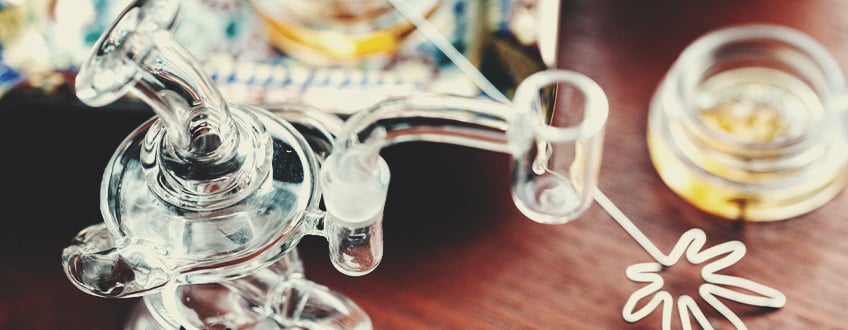
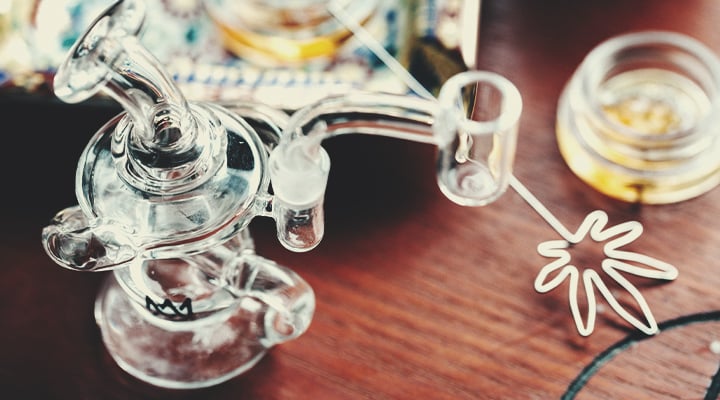
-
Heating method
Dab rigs operate at really high heat in order to ensure proper vaporization of concentrates and all their cannabinoids and terpenes. The 2 main methods of heating a dab rig are:
- Using an e-nail. These nails have an electronic heating unit that can be tightly controlled to operate at a set maximum temperature. While they are more expensive, e-nails offer much more precision when it comes to heating your concentrates. An advantage for those who want precision.
- Using a blowtorch. Titanium or ceramic nails need to be heated until they're red hot. Most dabbers will use a blow torch to blast their nails until they're glowing hot before quickly loading in their concentrates. While this method is obviously cheaper and more accessible, it also leaves a lot of room for error (mainly under or over-heating the nail).
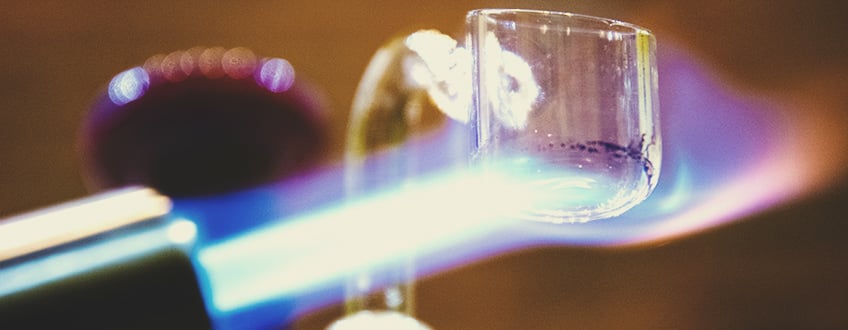
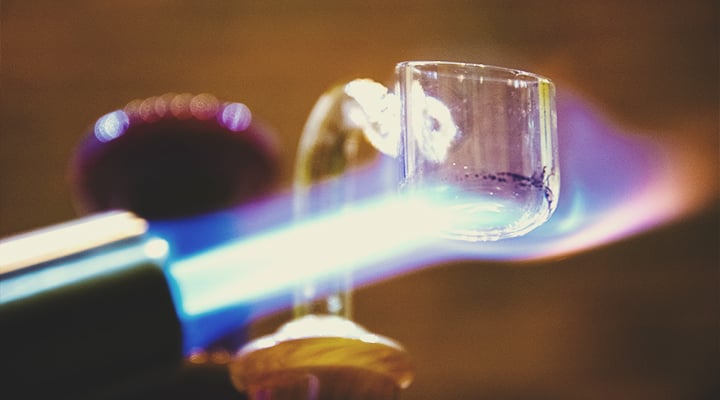
How to hit a dab properly
Hitting a dab can seem daunting, but it doesn't need to be. With a bit of guidance and maybe just a bit of help from an experienced dabber, you can start enjoying the taste and high of top-shelf concentrates today.
Dosing dabs
Dosing dabs is really personal and will vary depending on your preferences, the type of concentrate you're smoking, and your sensitivity to cannabis. In legal markets across the US, 0.1g of concentrate is considered somewhat of a "standard" dose of dabs, but we recommend rookie dabbers start a little lower to avoid getting too high too quickly.
Seeing that dabs are usually sold by the gram, dosing such small quantities can be difficult. To facilitate the process, always use a dab tool to handle your dabs and, where possible, use a scale to measure out your individual doses. If you don't have a scale, feel free to eyeball it; just remember to edge on the side of a smaller dose to get started. After all, you can always smoke more if you feel the need to.
Step-by-step guide to dabbing
1. Prepare your dabs and all your equipment in advance. Set yourself up in a comfortable area with plenty of table space to spread out your gear.
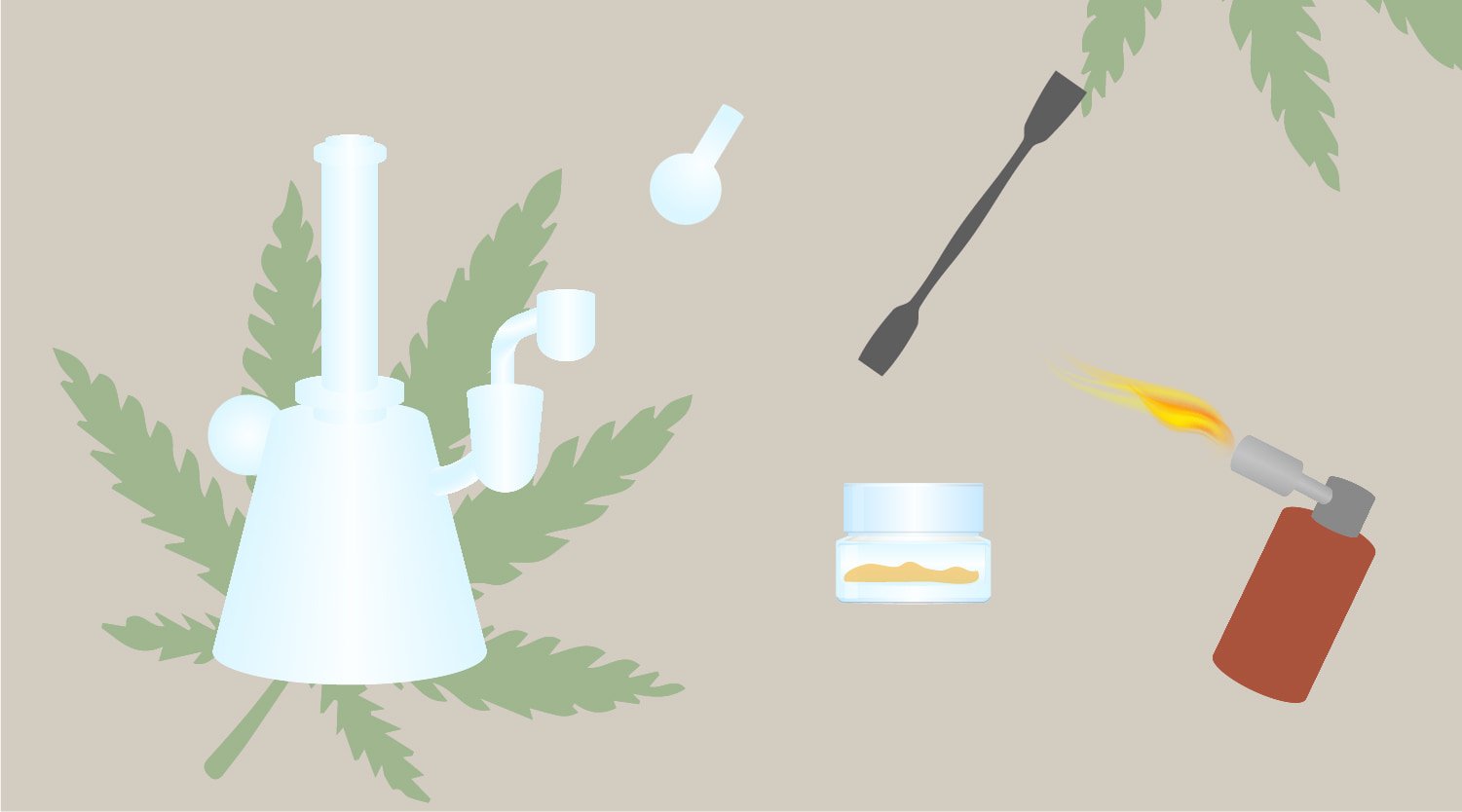
2. Prepare your dose (follow the dosing tips mentioned above).
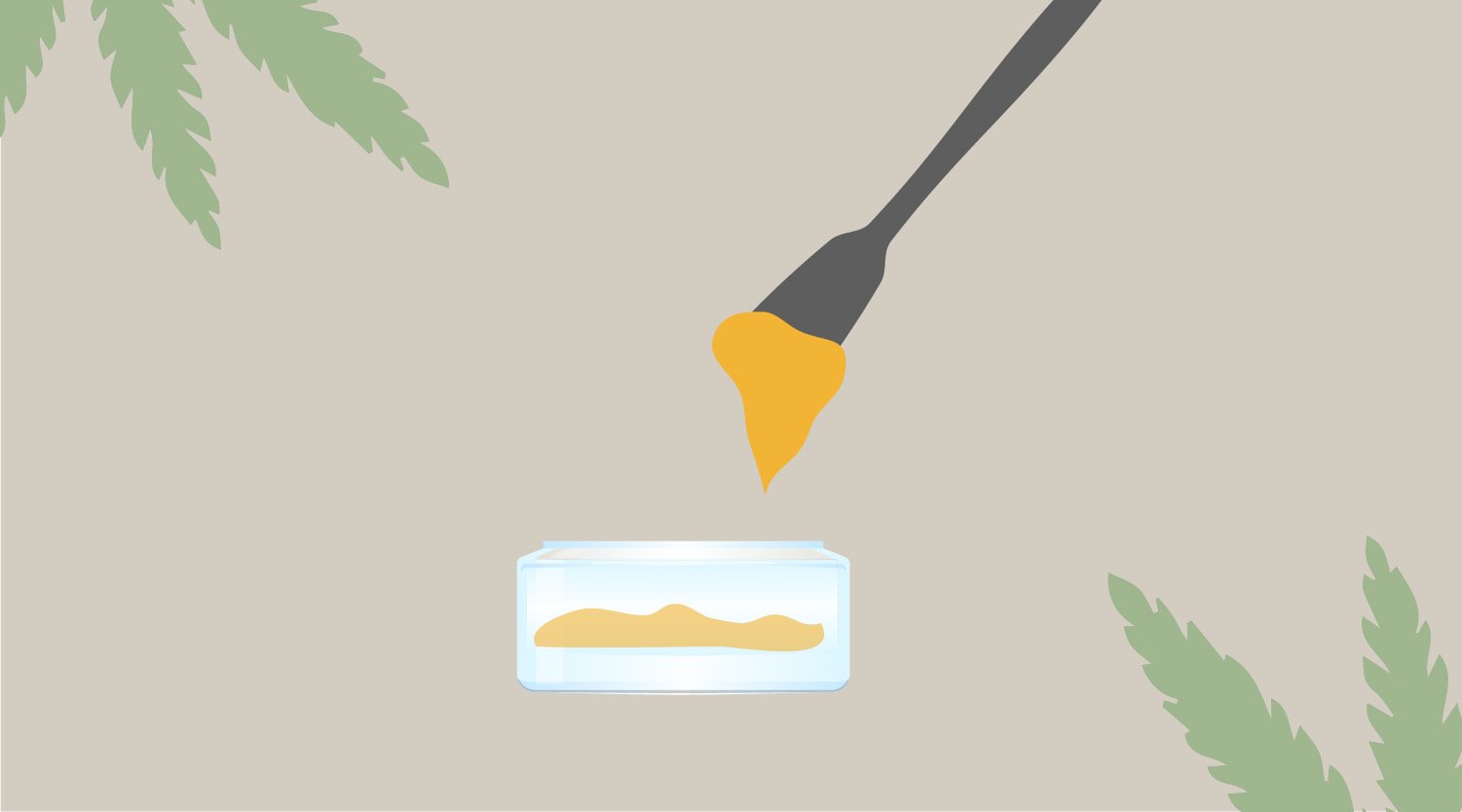
3. Preheat your nail. For the best results, we recommend you start at about 220°C for hash, kief, and bubble hash. For BHO, you might want to drive up the temperature to about 260°C, depending on how wet your dabs are. Wetter concentrates may require slightly higher heat to vaporize properly.
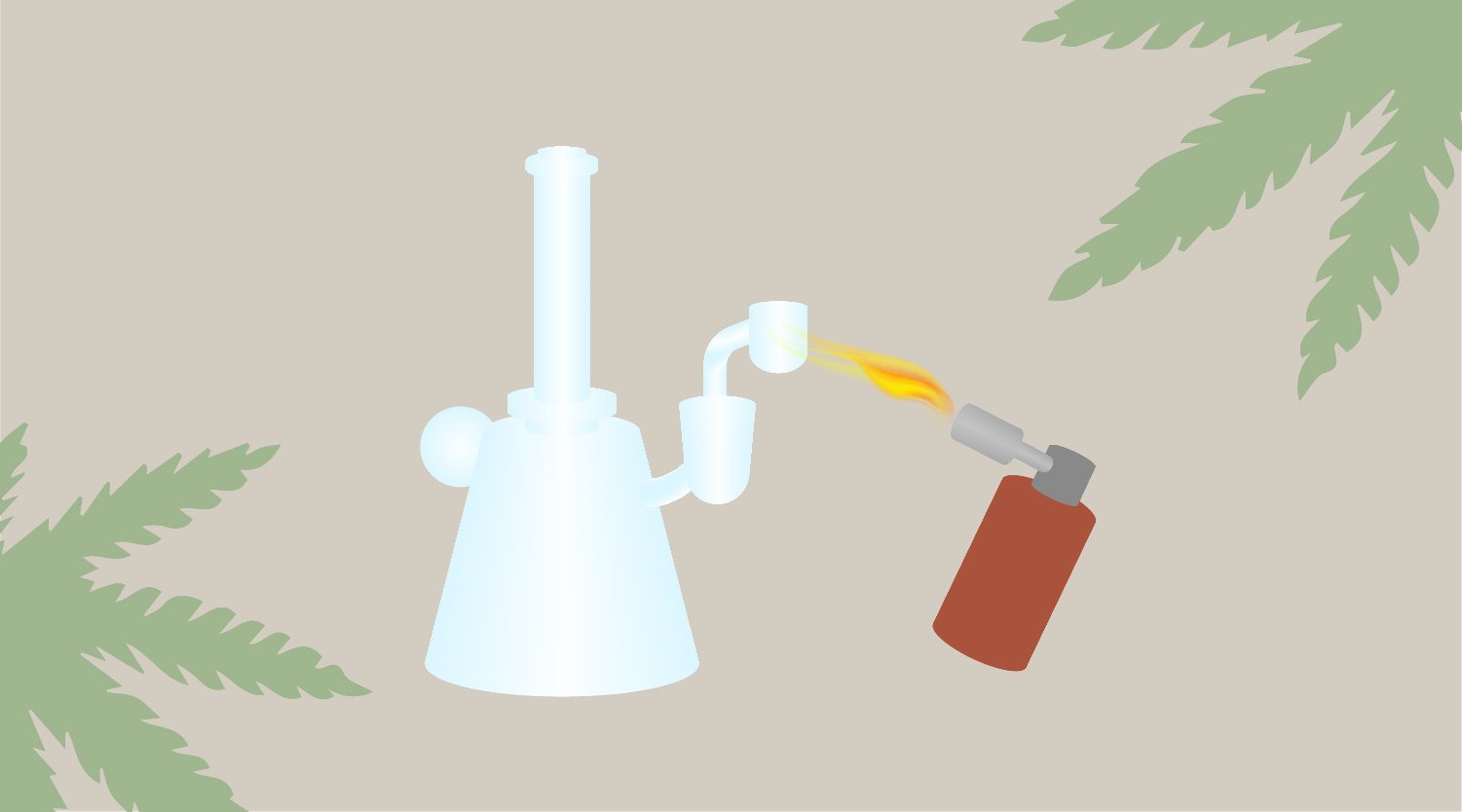
4. Once your nail has reached temperature, load your prepared dose into the nail and cover it with your carb cap to ensure better heat distribution and prevent the loss of vapor.
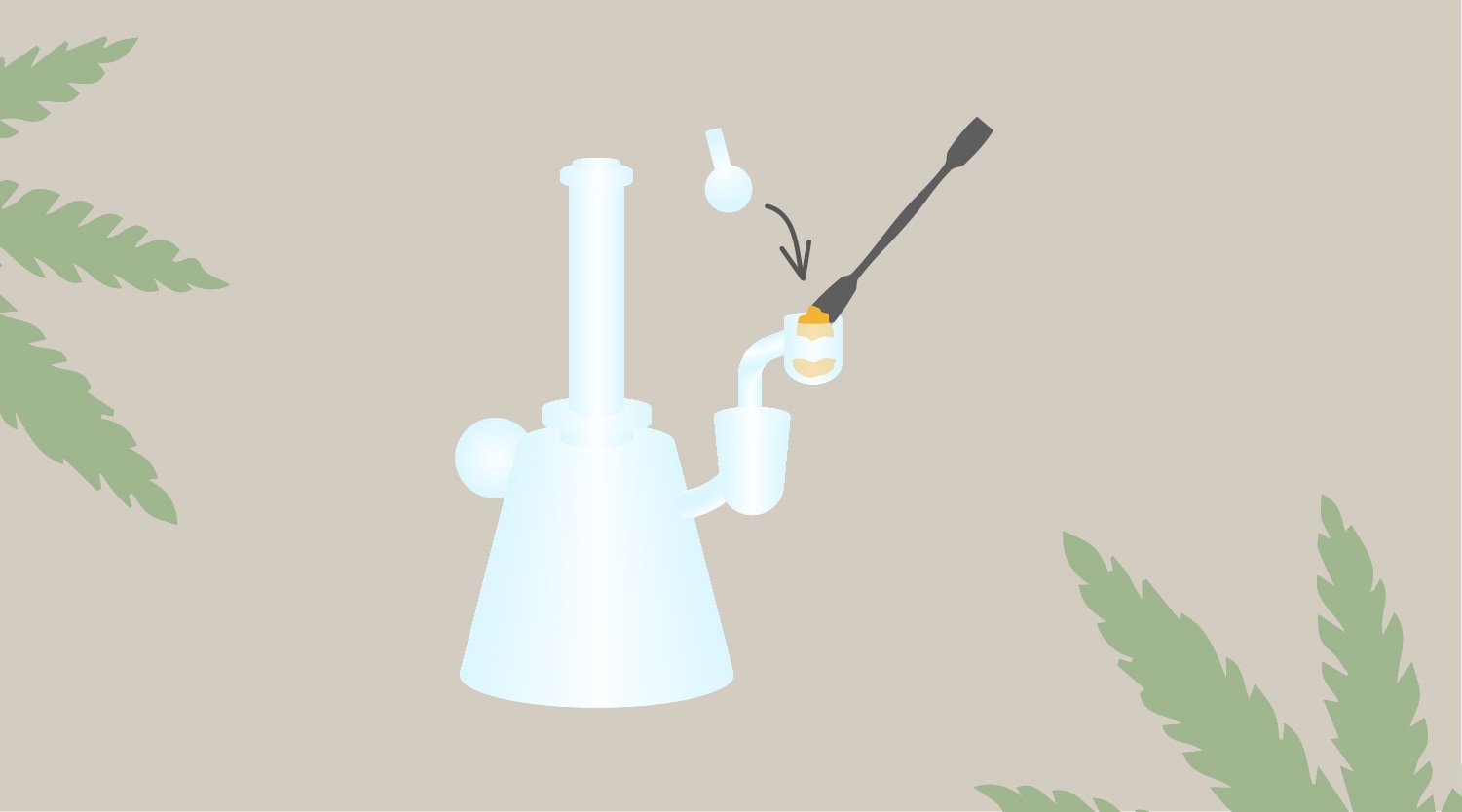
5. Your concentrate should start vaporizing as soon as it comes into contact with the nail. When it does, start inhaling slowly and gently through the mouthpiece of your rig.
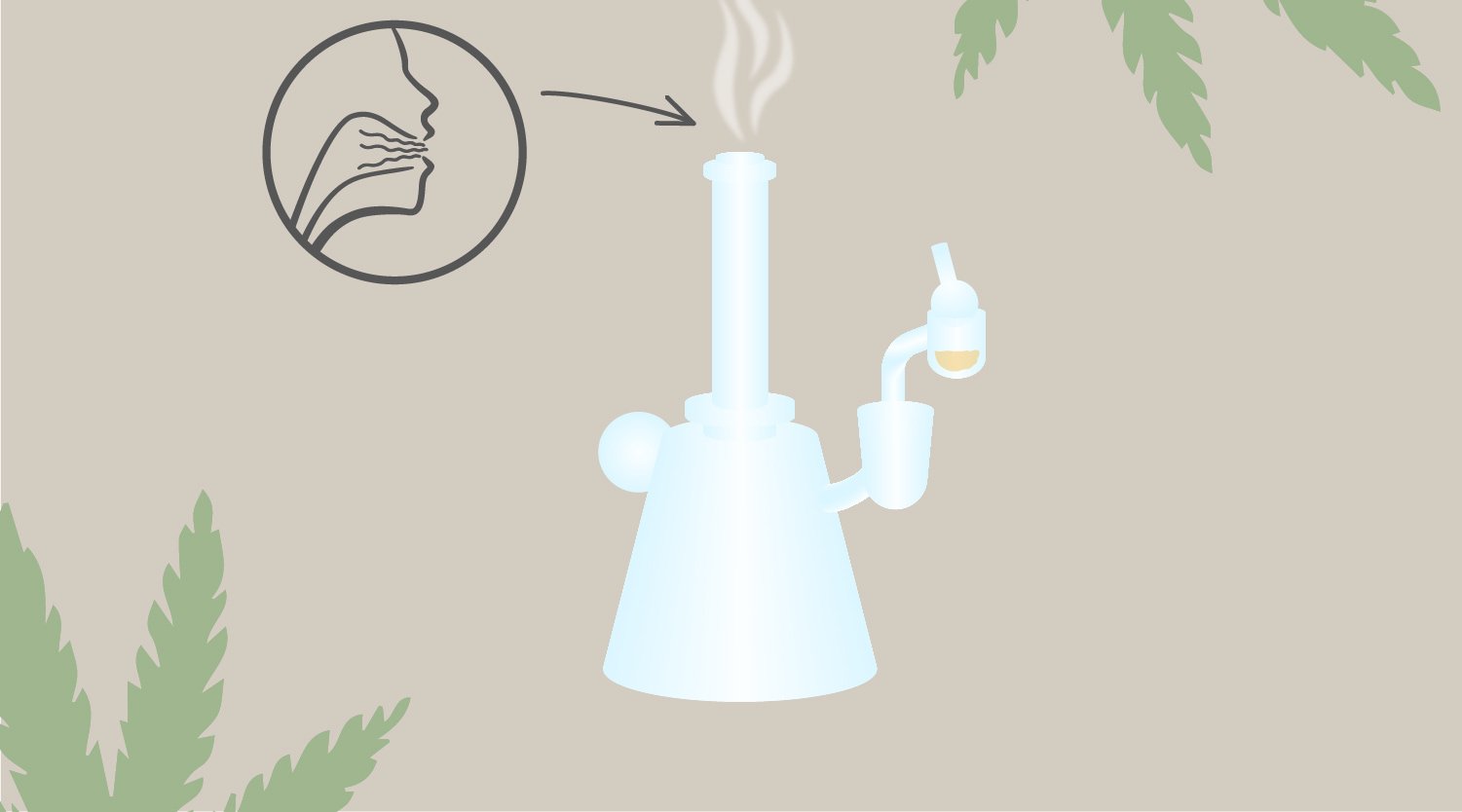
6. Hold the vapor in your lungs, savor the flavour, and breathe out. Now get ready to enjoy the ride!
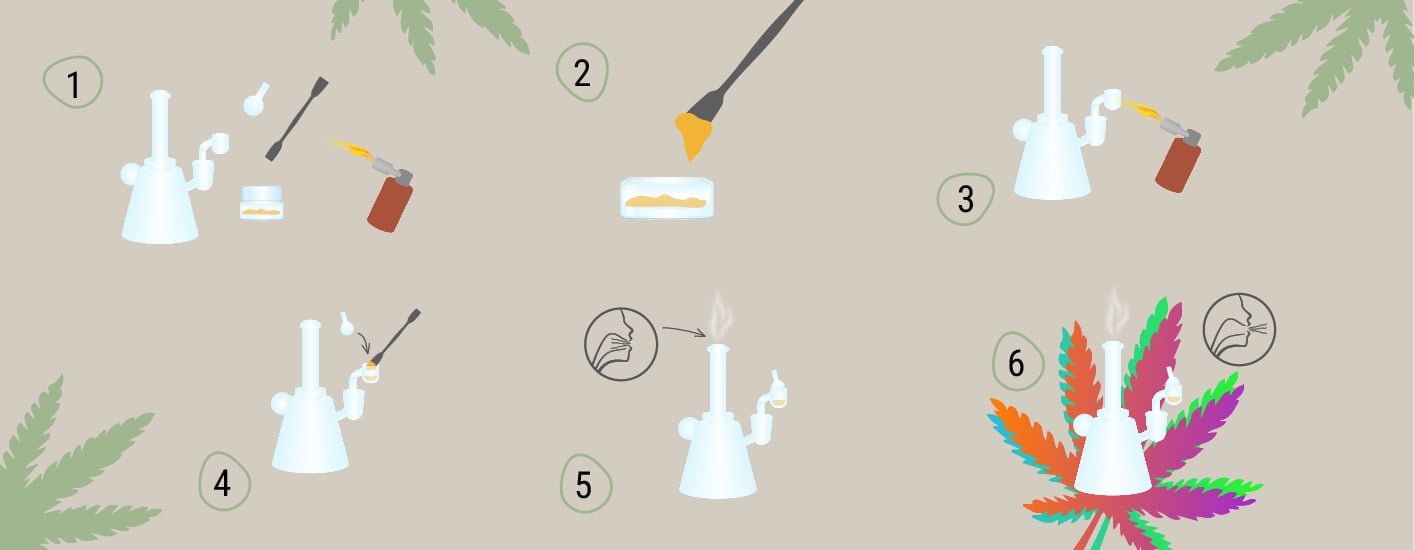
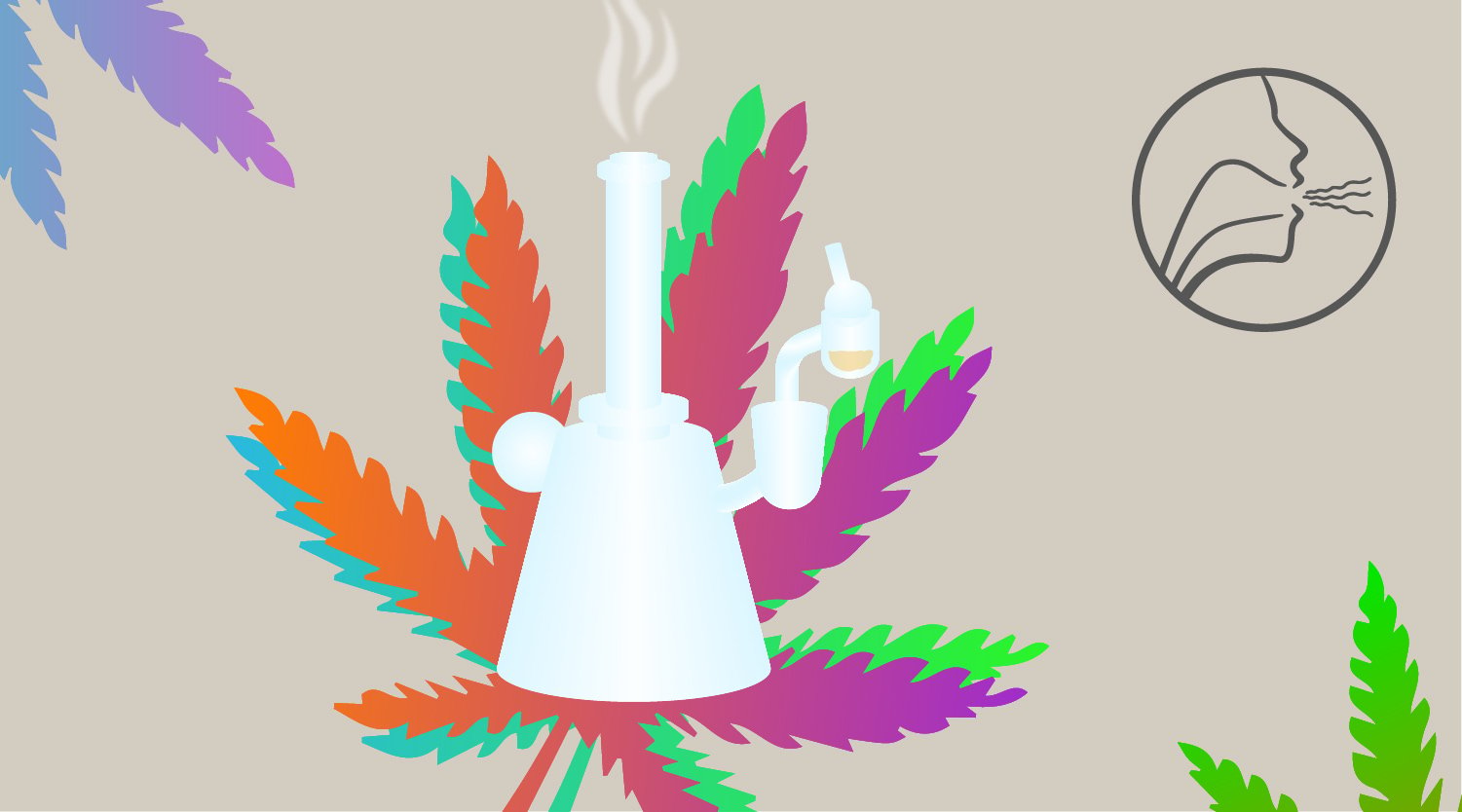
High temp Vs Low temp dabs
As with many aspects of smoking cannabis, dab connoisseurs have very specific preferences about how they like to consume their dabs. In particular, some prefer to smoke their dabs at high temperatures to ensure thicker, fuller hits, while others prefer smoking at a lower temperature to preserve more flavours and aromas from the terpenes in their concentrates. See our article on Slow Start Dabs for more information.
While it is important to avoid overheating your dabs to avoid combustion (which is toxic), we generally believe that everyone should experiment and discover the dabbing technique that they like best.
A final word on dabbing
Dabbing is the latest craze in the cannabis world, and with good reason. Few things have had such a big impact on the way we consume and enjoy cannabis. If you're new to the world of dabbing, this article should have primed you for dabbing, what it is, and how to have the best possible dabbing experience. For more info like this, check out our 7 Dabbing Tips for beginners and remember to always experiment and have fun when you light up.
DisclaimerExtracts, concentrates, and oils used for dabbing are among the strongest cannabis products available. Proceed with caution when using substances high in THC. Start with low doses and slowly increase over time to build up a tolerance to the compound.
Remember: Set and Setting will help you deal with various situations.
Stay Cultivated.
- Lung injury from inhaling butane hash oil mimics pneumonia https://www.sciencedirect.com
- Toxicant Formation in Dabbing: The Terpene Story https://pubs.acs.org


























